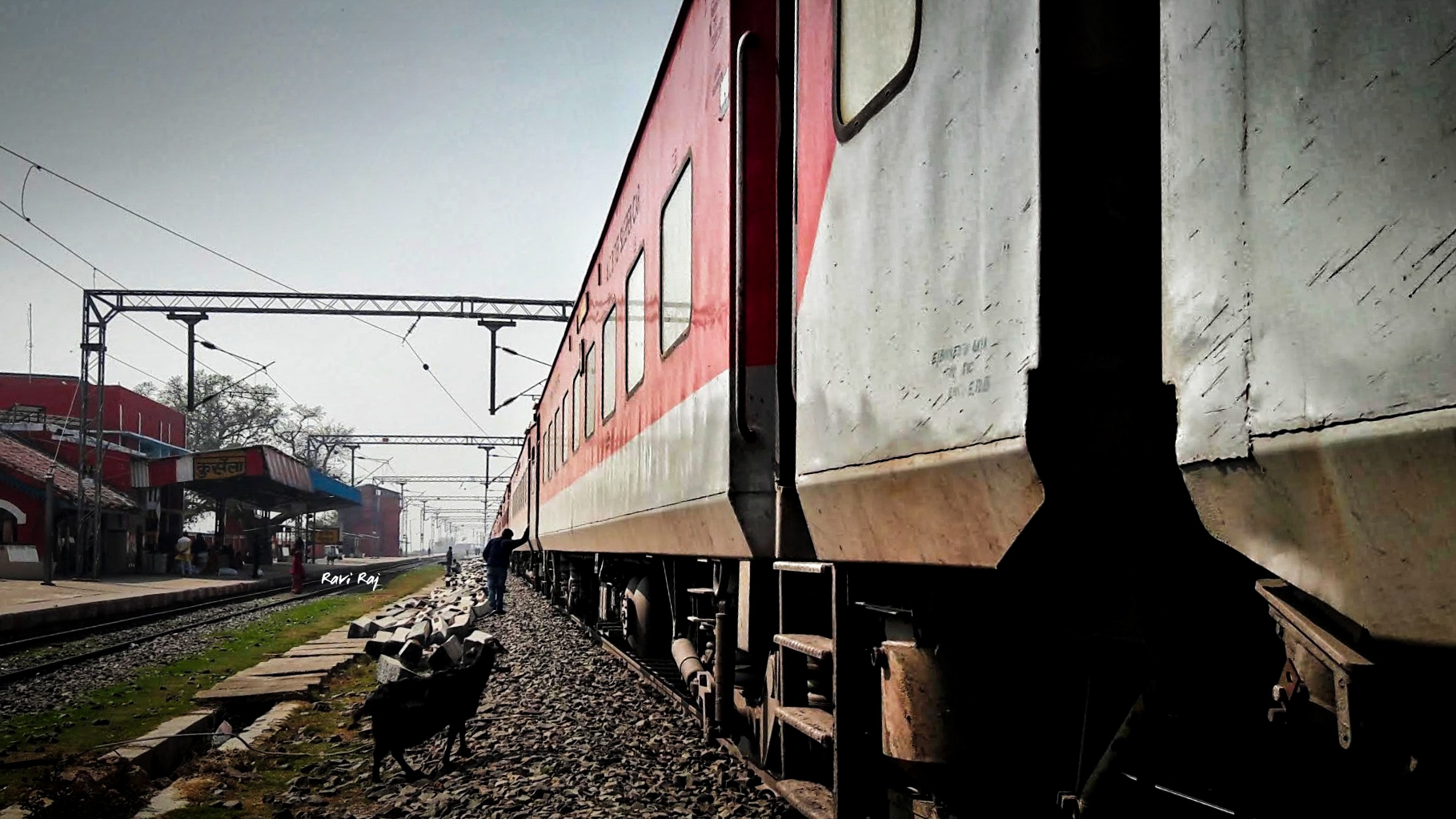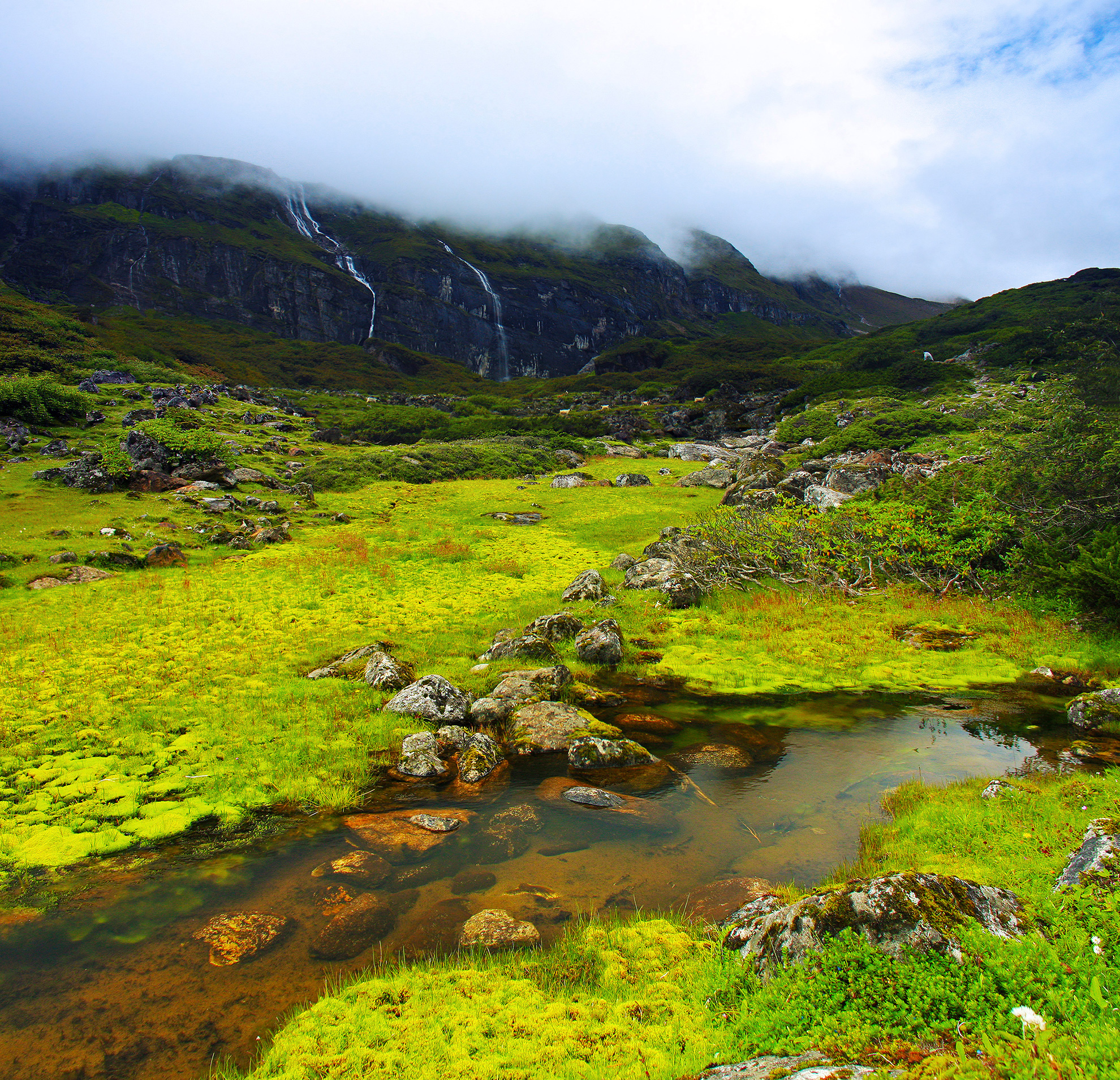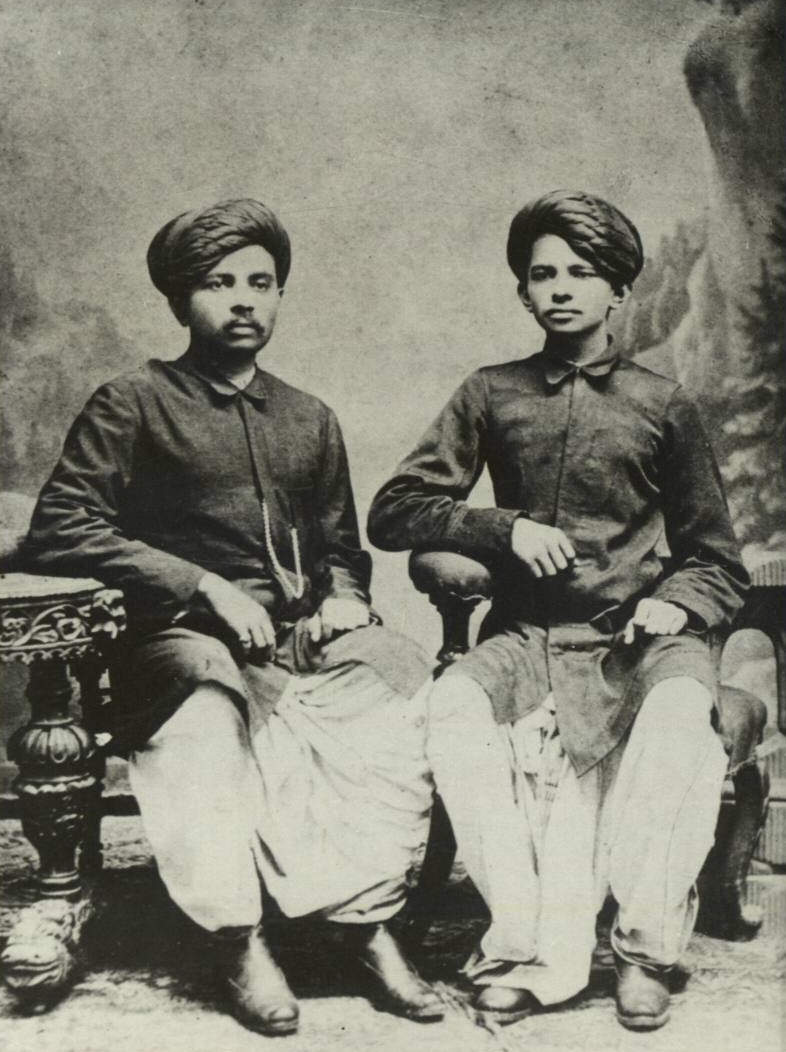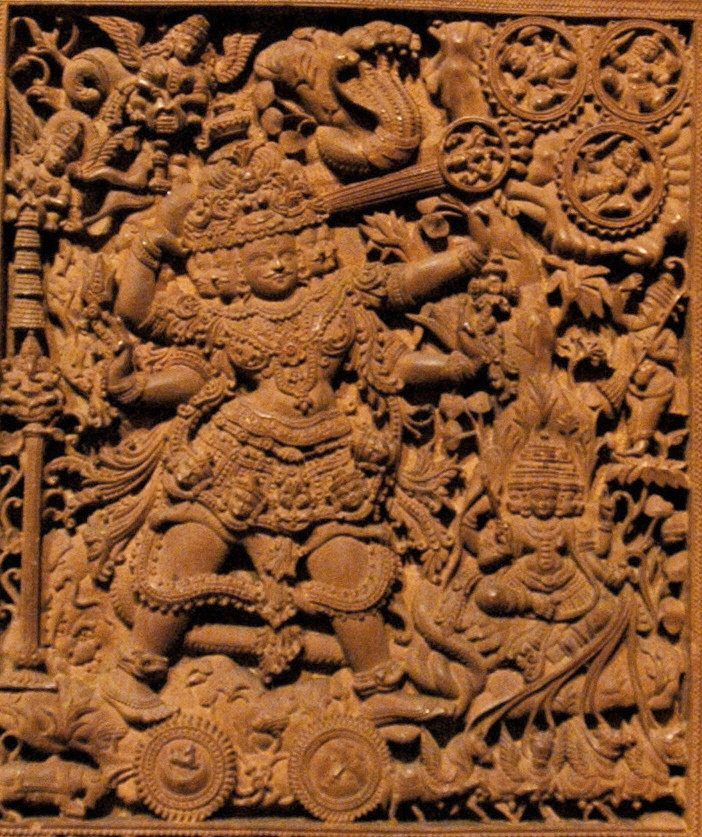|
Trimohini Sangam
Trimohini Sangam is a confluence of rivers located near Kursela village in Katihar district, Bihar state, India. There the river Koshi meets with the Ganges, with which a small stream of Kalbalia river originates. Trimohini Sangam is one of the 12 banks on which the ashes of Mahatma Gandhi were immersed on 12 February 1948. In order to develop this place as a tourist destination, the Bihar State Tourism Department approved a plan of Rs 3.50 crore in the 2017-18 financial year. Attractions This area has been named as Sunder Nagar by Sangam Baba for the coast. The construction of a temple has been started for the establishment of Raneshwar Kamna Linga near this site. * Guide Dam Lake: the shore bandh done on the banks of Koshi, a tributary of Trimohini Sangam, which is known as Guide Dam Lake. More than 150 species of birds are present. *Baba Bateshwarnath Temple: near the Sangam is the temple of Baba Bateshwarnath. *Maghi Purnima Mela: a Melā is held annually at Trimohini San ... [...More Info...] [...Related Items...] OR: [Wikipedia] [Google] [Baidu] |
Confluence
In geography, a confluence (also: ''conflux'') occurs where two or more flowing bodies of water join to form a single channel. A confluence can occur in several configurations: at the point where a tributary joins a larger river ( main stem); or where two streams meet to become the source of a river of a new name (such as the confluence of the Monongahela and Allegheny rivers at Pittsburgh, forming the Ohio); or where two separated channels of a river (forming a river island) rejoin at the downstream end. Scientific study of confluences Confluences are studied in a variety of sciences. Hydrology studies the characteristic flow patterns of confluences and how they give rise to patterns of erosion, bars, and scour pools. The water flows and their consequences are often studied with mathematical models. Confluences are relevant to the distribution of living organisms (i.e., ecology) as well; "the general pattern ownstream of confluencesof increasing stream flow and decreasing ... [...More Info...] [...Related Items...] OR: [Wikipedia] [Google] [Baidu] |
Kursela
Kursela is a village situated in the bank of Trimohini Sangam, which is the confluence of the river Ganga and Kosi . It is the de facto financial centre of Katihar district. As per the Indian government population census of 2011, Kursela was reported to have city proper population of 63,928. Being a major wheat and maize producing village, around 40% of its production is transported to neighbouring districts. Kursela is also famous for its grand Chhath celebration at the bank of river Kosi and Ganga. Kursela consist of majorly 10 villages: Gobrahi Diara, Balthi, Basuhar, Debipur Kathi, Dhobinia Milik Dakhinwari, Gobrahi Diara, Tingharia, Shahpur Dharmi Milik, Muradpur, Madhaili and Jarlahi. 45.99% population of Kursela subdivision is literate, out of which 52.83% males and 38.44% females are literate. There are about 12,533 houses in the sub-district. Geography It is located at an elevation of 25 m above MSL. http://www.fallingrain.com/world/IN/34/Kursela.html Map and weather ... [...More Info...] [...Related Items...] OR: [Wikipedia] [Google] [Baidu] |
Katihar District
Katihar district is one of the thirty-eight districts of Bihar state in India, and Katihar city is the administrative headquarters of this district. The district is a part of Purnia Division. It is prominently known for its Katihar Junction Railway Station, which is a Category A station on the Barauni–Guwahati line. It has been included in the Aspirational Districts Program of the Government of India since 2018, to improve its socio-economic indicators. History Katihar district is a part of the Mithila region. Mithila first gained prominence after being settled by Indo-Aryan peoples who established the Mithila Kingdom (also called Kingdom of the Videhas). During the late Vedic period (c. 1100–500 BCE), Kingdom of the Videhas became one of the major political and cultural centers of South Asia, along with Kuru and Pañcāla. The kings of the Kingdom of the Videhas were called Janakas. The Mithila Kingdom was later incorporated into the Vajjika League, which had its capital in ... [...More Info...] [...Related Items...] OR: [Wikipedia] [Google] [Baidu] |
Bihar
Bihar (; ) is a state in eastern India. It is the 2nd largest state by population in 2019, 12th largest by area of , and 14th largest by GDP in 2021. Bihar borders Uttar Pradesh to its west, Nepal to the north, the northern part of West Bengal to the east, and with Jharkhand to the south. The Bihar plain is split by the river Ganges, which flows from west to east. On 15 November 2000, southern Bihar was ceded to form the new state of Jharkhand. Only 20% of the population of Bihar lives in urban areas as of 2021. Additionally, almost 58% of Biharis are below the age of 25, giving Bihar the highest proportion of young people of any Indian state. The official languages are Hindi and Urdu, although other languages are common, including Maithili, Magahi, Bhojpuri and other Languages of Bihar. In Ancient and Classical India, the area that is now Bihar was considered the centre of political and cultural power and as a haven of learning. From Magadha arose India's ... [...More Info...] [...Related Items...] OR: [Wikipedia] [Google] [Baidu] |
Koshi River
The Kosi or Koshi ( ne, कोशी, , hi, कोसी, ) is a transboundary river which flows through China, Nepal and India. It drains the northern slopes of the Himalayas in Tibet and the southern slopes in Nepal. From a major confluence of tributaries north of the Chatra Gorge onwards, the Kosi River is also known as Saptakoshi ( ne, सप्तकोशी, ) for its seven upper tributaries. These include the Tamor River originating from the Kanchenjunga area in the east and Arun River and Sun Kosi from Tibet. The Sun Koshi's tributaries from east to west are Dudh Koshi, Bhote Koshi, Tamakoshi River, Likhu Khola and Indravati. The Saptakoshi crosses into northern Bihar, India where it branches into distributaries before joining the Ganges near Kursela in Katihar district. The Kosi River is long and drains an area of about in Tibet, Nepal and Bihar.Nayak, J. (1996). ''Sediment management of the Kosi River basin in Nepal''. In: Walling, D. E. and B. W. ... [...More Info...] [...Related Items...] OR: [Wikipedia] [Google] [Baidu] |
Ganges
The Ganges ( ) (in India: Ganga ( ); in Bangladesh: Padma ( )). "The Ganges Basin, known in India as the Ganga and in Bangladesh as the Padma, is an international river to which India, Bangladesh, Nepal and China are the riparian states." is a trans-boundary river of Asia which flows through India and Bangladesh. The river rises in the western Himalayas in the Indian States and union territories of India, state of Uttarakhand. It flows south and east through the Gangetic Plain, Gangetic plain of North India, receiving the right-bank tributary, the Yamuna, which also rises in the western Indian Himalayas, and several left-bank tributaries from Nepal that account for the bulk of its flow. In West Bengal state, India, a feeder canal taking off from its right bank diverts 50% of its flow southwards, artificially connecting it to the Hooghly river. The Ganges continues into Bangladesh, its name changing to the Padma River, Padma. It is then joined by the Jamuna River (Bangladesh), ... [...More Info...] [...Related Items...] OR: [Wikipedia] [Google] [Baidu] |
Mahatma Gandhi
Mohandas Karamchand Gandhi (; ; 2 October 1869 – 30 January 1948), popularly known as Mahatma Gandhi, was an Indian lawyer, Anti-colonial nationalism, anti-colonial nationalist Quote: "... marks Gandhi as a hybrid cosmopolitan figure who transformed ... anti-colonial nationalist politics in the twentieth-century in ways that neither indigenous nor westernized Indian nationalists could." and Political ethics, political ethicist Quote: "Gandhi staked his reputation as an original political thinker on this specific issue. Hitherto, violence had been used in the name of political rights, such as in street riots, regicide, or armed revolutions. Gandhi believes there is a better way of securing political rights, that of nonviolence, and that this new way marks an advance in political ethics." who employed nonviolent resistance to lead the successful Indian independence movement, campaign for India's independence from British Raj, British rule, and to later inspire movements ... [...More Info...] [...Related Items...] OR: [Wikipedia] [Google] [Baidu] |
Maghi Purnima
Maghi Purnima, also known by the name of Magha Purnima, is known to be a day of the full moon that occurs during the Hindu calendar month of Magh. This day falls during the Gregorian calendar month of January or February. During this time period, the auspicious Kumbh Mela is held every twelve years, and the Magha Mela is held on an annual basis at the confluence of three rivers or Triveni Sangam all around north India, such as in cities like Allahabad or Prayag. Date in Gregorian calendar 2027 , , 9 February See also *Basant Panchmi Vasant Panchami, also called Saraswati Puja in honor of the Hindu goddess Saraswati, is a festival that marks the preparation for the arrival of spring. The festival is celebrated in Indian religions in different ways depending on the region. ... References Observances held on the full moon Hindu festivals Festivals in India Kumbh Mela {{India-festival-stub ... [...More Info...] [...Related Items...] OR: [Wikipedia] [Google] [Baidu] |
Kartik Purnima
Kartika Purnima is a Hindu, Sikh and Jain cultural festival that is celebrated on Purnima (full moon day), the 15th (or 30th) lunar day of the month of Kartika. It falls in November or December of the Gregorian calendar and is also known as Tripurari Purnima or Deva-Deepawali, the gods' festival of lights. Karthika Deepam is a related festival that is celebrated in South India and Sri Lanka on a different date. Significance Radha-Krishna In Vaishnavite tradition, this day is considered significant and special for the worship of both Radha and Krishna. It is believed that on this day, Radha-Krishna performed Raslila with their Gopis. At Jagannath Temple, Puri and all other Radha-Krishna temples, a sacred vow is observed throughout Kartika, and performances of Raslila are organized on the day of Kartik Purnima. According to other legends, Krishna worshipped Radha on this day. Shiva 'Tripuri Purnima' or 'Tripurari Purnima' derives its name from Tripurari – the f ... [...More Info...] [...Related Items...] OR: [Wikipedia] [Google] [Baidu] |
Dainik Bhaskar
''Dainik Bhaskar '' () is a Hindi-language daily newspaper in India which is owned by the Dainik Bhaskar Group. According to the World Association of Newspapers, it ranked fourth in the world by circulation in 2016 and per the Indian Audit Bureau of Circulations was the eleventh largest newspaper in India by circulation . Started in Bhopal in 1958, it expanded in 1983 with the launch of ''Dainik Bhaskar'' Indore edition. The Dainik Bhaskar Group is present in 13 Indian states with 65 editions in Hindi, Marathi, and Gujarati. History ''Subah Savere'' was launched in 1948 to fulfill the need for a Hindi-language daily newspaper. It launched under the name ''Subah Savere'' ("Early Morning") in Bhopal and ''Good Morning India'' in Gwalior. In 1957, the newspaper was renamed ''Bhaskar Samachar''. In 1958, the newspaper was renamed ''Dainik Bhaskar''. The word ''Bhaskar'' means "the Rising Sun" in English. Its rising sun graphic was meant to represent a bright future. ... [...More Info...] [...Related Items...] OR: [Wikipedia] [Google] [Baidu] |
Rivers Of Bihar
A river is a natural flowing watercourse, usually freshwater, flowing towards an ocean, sea, lake or another river. In some cases, a river flows into the ground and becomes dry at the end of its course without reaching another body of water. Small rivers can be referred to using names such as creek, brook, rivulet, and rill. There are no official definitions for the generic term river as applied to geographic features, although in some countries or communities a stream is defined by its size. Many names for small rivers are specific to geographic location; examples are "run" in some parts of the United States, "burn" in Scotland and northeast England, and "beck" in northern England. Sometimes a river is defined as being larger than a creek, but not always: the language is vague. Rivers are part of the water cycle. Water generally collects in a river from precipitation through a drainage basin from surface runoff and other sources such as groundwater recharge, springs, a ... [...More Info...] [...Related Items...] OR: [Wikipedia] [Google] [Baidu] |

_1_by_N._A._Naseer.jpg)



